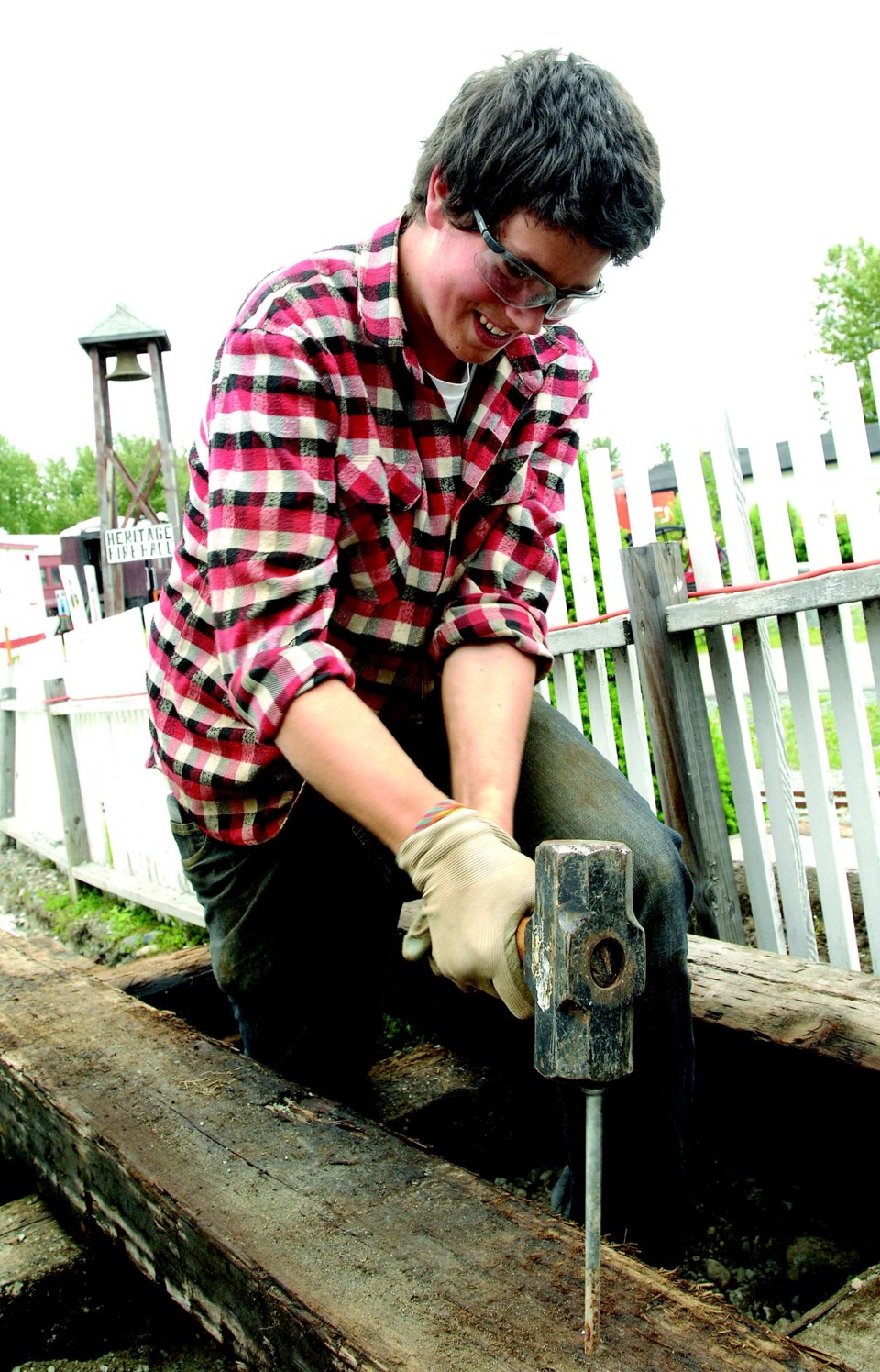It's not glamourous work shoveling dirt to make a wheelchair-accessible picnic area at the Prince George Railway and Forestry Museum for $2 a day, but Logan Piercey wasn't complaining.
In fact, the 18-year-old from Lower Sackville, N.S., is kind of sad his work term as a Katimavik youth volunteer came to a end Friday.
Not only is the six-month work term he signed up for now complete, but the entire Katimavik program is being dismantled, a victim of federal funding cuts in the March budget.
"It's too bad because it's a great program and it's helped me and all the members of my group a lot -- we're all clear-minded and ready for the future and we've had a great volunteer experience," said Piercey. "We all know the work we do at places like this is irreplaceable, just because you can't come across full-time volunteering. That's what a lot of these places need, someone to be here every day to do the work. I hope it will come back."
For the past three months, Piercey has been a groundskeeper/labourer at the museum, having spent his first three months with Katimavik in Midland, Ont. Piercey was unable to get into trade school in Nova Scotia and when his father suggested he sign up for Katimavik he jumped at the chance. His dad had a thorough understanding of the program, having served as a Katimavik volunteer in the 1970s.
"He went to northern New Brunswick and he was in Winnipeg and he liked it," said Piercey. "He really enjoyed the work, he said it was a lot of fun and I think it helped him straighten out a bit. I was looking for a volunteer experience where I could be helpful and it's a great way to see the country."
As a group, Piercey and the other 10 Katimavik volunteers in Prince George served Easter dinner for the St. Vincent de Paul Society, and they also camped overnight at the Ancient Forest, east of the city, to carry lumber into the woods for the Caledonia Ramblers' boardwalk project.
They've also taught French to students at Sacred Heart school, and have made themselves available to the Carney Hill Neighbourhood Society, the Canadian Diabetes Association, the Prince George Public Interest Research Group, Le Cercle des Canadiens Franais de Prince George, the Canadian Red Cross Society, the Northern Pride Centre Society and Two Rivers Art Gallery.
"They've been absolutely amazing," said Railway Museum executive director Ranjit Gill. "They're excited to be here and they'll do anything we ask them to do, whether it's mowing lawns or snow removal. They're just hardworking kids and they're delightful."
Throughout its history, Katimavik has been dependent on the federal government for most of its funding. That $15 million annual lifeline was cut when the Conservatives revealed their budget in March. The money pays the food, travel and accommodations for about 1,000 youth volunteers throughout the year.
"The organization was prepared for the worst and our CEO [Daniel Lapointe] was expecting a reduction in funding but because we had an agreement signed to March 2013, we all thought we were good until then," said Marc Meilleur, Katimavik's manager of volunteer affairs. "We hoped we had shown the government that the program had merit and deserved to continue."
Katimavik got its start in 1977 and continued until federal funding was slashed in 1986. It was revived in 1995, and in its history has involved 30,000 Canadians between the ages of 17 and 21, who have contributed to civic projects for non-profit organizations in more than 2,000 communities.
Katimavik derives its name from the Inuktitut word, which means "meeting place." Its activities promote civic engagement, leadership, official languages studies, the environment, cross-regional cultural diversity and healthy lifestyles.
"It's seen as a youth program, but I think the part that is often forgotten is the impact on communities," said Meilleur. "It touches these organizations by providing needed services. They're doing this full-time, and not many people volunteer 35 hours a week. They've been role models for local youth and they've brought their enthusiasm and positive attitudes and have connected with people.
"They get to learn about Canada in a way few people can, and the richness of the program is how they develop their abilities and competencies. They learn how to live in a group and how to compromise and organize."
The program operated in every province and territory. Katimavik volunteers served six- or nine-month terms (usually for three months in one location), working 28 to 35 hours per week for a token $2 per day while living in rented houses with 10 of their peers. For the past four years, they've been in Prince George. Quesnel and Vanderhoof also have Katimavik houses.
The Katimavik board is looking at alternate funding sources to keep the program alive. Meilleur, who lives in Montreal, will keep his job until the end of the summer, and is now preparing reports to Canadian Heritage on what Katimavik projects have achieved.
"The hope is we'll be able to find a way to keep the flame burning and gradually grow the program and diversify funding and hopefully maybe some day the federal government will want to reinvest in a project like ours," said Meilleur. "We like to have more than one source of funding to allow us to weather the storm."



